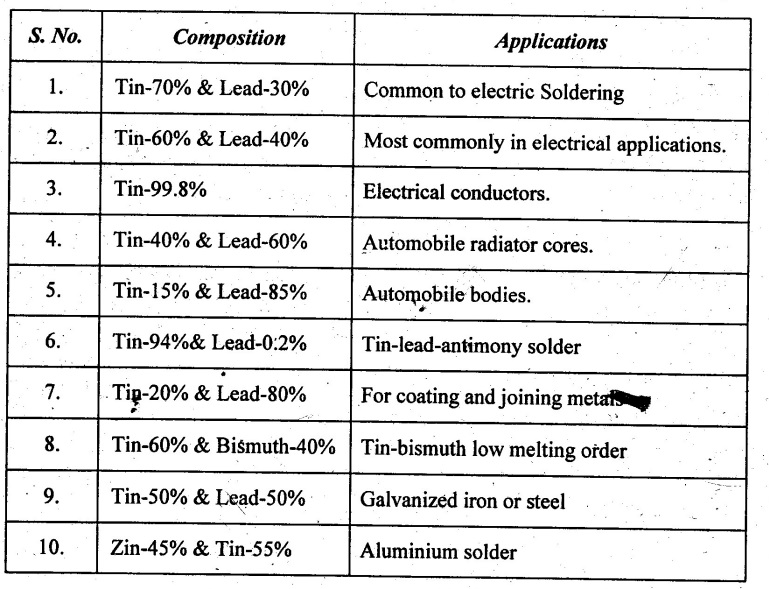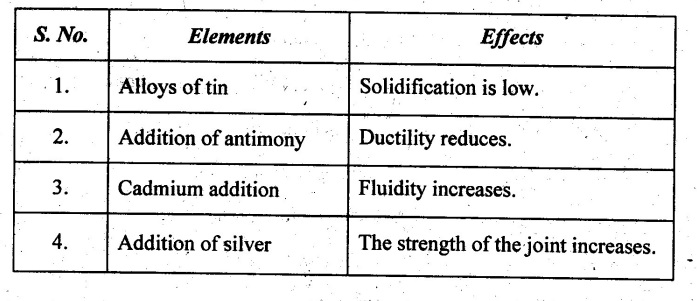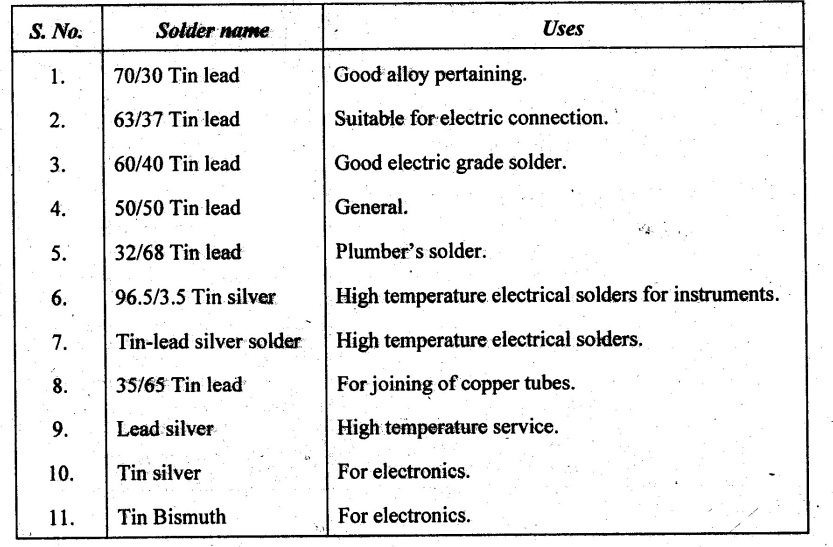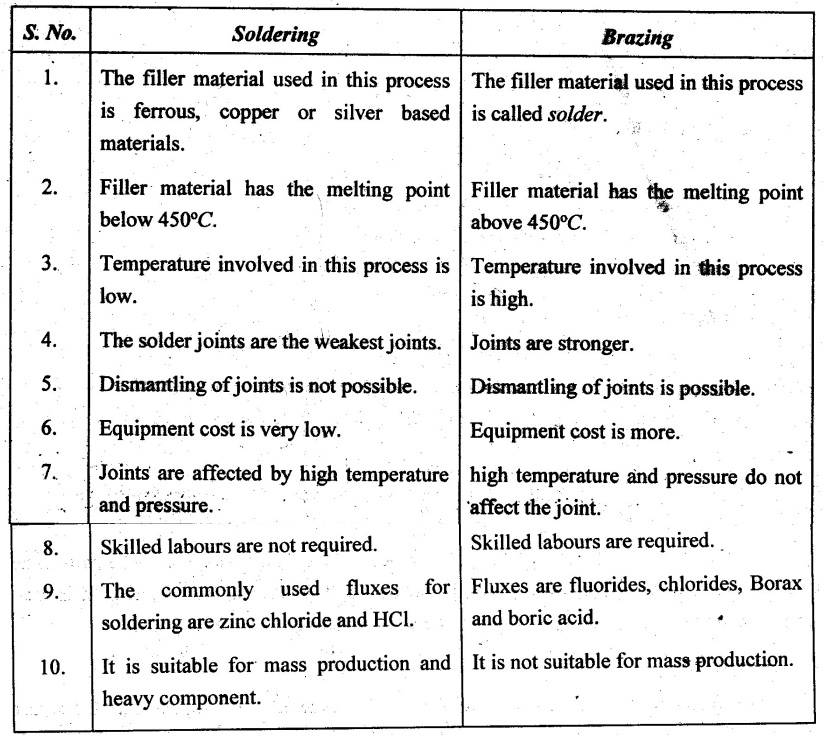The process of joining of two dissimilar metals by means of filler metal called solder is known as soldering whose melting temperature is below 450°C. Soft soldering being a low temperature (300°C) process does not bring the distortion. The soldering joints are weaker. when compared to brazed joints.
The soldered joint is generally considered to be a metallurgical bond between solder filler metal and base metals being joined. Some solder joints do not have a metallurgical bond but they are held to gather by adhesion properties of the interface.
The solder alloy is applied as a liquid metal that wets and spreads in the joint, and generally forms a layer of an inter-metallic compound with a small amount of the base metal. Upon solidification, the joint is held together by the same attraction between adjacent atoms that holds a piece of solid metal together.
A solder should have the following characteristics.
1. It acts as a good adhering film.
2. It wets the base metal.
3. It freely flows over surfaces.
4. It has good capillary action.
The tin and lead are most widely used solders. The selection of solder depends on:
1. Melting and spreading characteristics
2. Resistance to corrosion
3. Temperature requirement
4. Materials cost
5. Ductility and strength.
Flux is intended to enhance the wetting of base materials by the solder by tarnish films from pre-cleaned surfaces and preventing oxidation during the soldering operation. The selection of flux depends on the following other factors:
1. Cost
2. Flux type
3. Joint design and the parent material
4: Temperature
5. Solder type
6. Ventilation and room temperature
7. Corrosiveness.
The various steps in soldering process are as follows:
1. Surface cleaning
2. Flux application
3. Surface tinning
4. Parts holding
5. Solder applications.
1. Typical Solders and their Applications

2. Effects of Various Alloying Elements in Soldering

3. Soldering Methods
The types of soldering are:
1. Hard soldering
2. Soft soldering
3. Dip soldering
4. Wave soldering:
1. Hard soldering:
In hard soldering, the filler metal is silver. It is also known as silver soldering. This method is more expensive than plain brazing because the filler metal is more expensive. This hard soldering method is used for joining electrical and refrigeration parts.
2. Soft soldering:
This is the most commonly used soldering method. In this method, soldering iron is a copper rod with a thin tip which is used for flattering the soldering material. The soldering iron can be heated by keeping in a furnace or by means of an electrical resistance. The filler metal used in soft soldering is called soft solder.
The various solders used in soft soldering are:

3. Dip soldering:
In this method, a large amount of solder is melted in a closed tank. Then, the parts to be soldered are cleaned and properly dipped in a flux bath as per the requirement. It is then dipped into the molten solder pool and lifted after completing the soldering process.
4. Wave soldering:
It is a different method in which the parts to be soldered is not dipped into the solder tank but wave is generated in the tank. So, the metal solder comes up and the joint is made. It is used for mass production of the electronic equipment.
The other methods of soldering are:
1. Oven soldering
2. Resistance soldering
3. Induction soldering and
4. Infrared soldering.
In resistance and induction soldering methods, the electric energy is used to join the metals. In infrared soldering, the ultrasonic sonic waves are used.
4. Difference between Soldering and Brazing

No comments:
Post a Comment